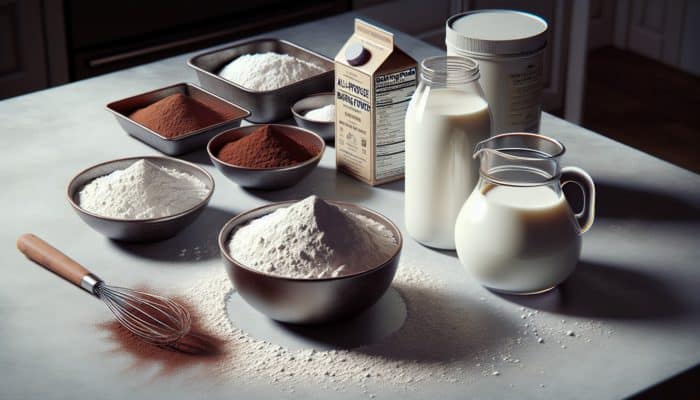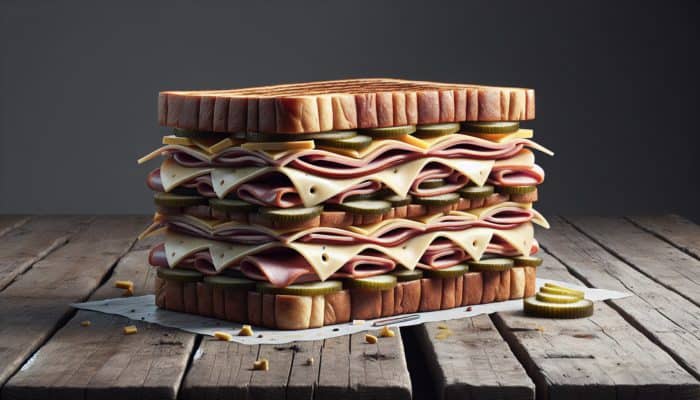Unlock the Secrets to Perfect Choux Pastry: Proven Techniques and Tips
To truly master the delicate craft of choux pastry, it is essential to immerse yourself in the fundamental techniques that form its backbone. A comprehensive understanding of the best ingredients, precise ratios, and effective temperature control is crucial. Mastering these elements will help you achieve that light, airy texture that makes choux pastry a beloved treat for all who indulge in it. With the right approach, you can transform your baking skills and create pastries that are both visually stunning and delicious.
Choosing High-Quality Ingredients for Superior Choux Pastry
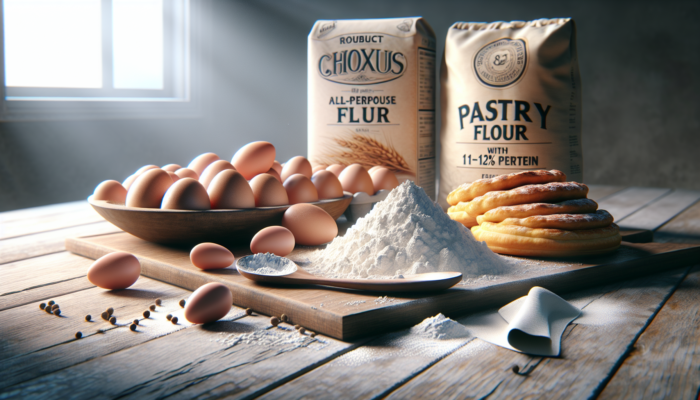
The success of any exceptional choux pastry is intricately linked to the quality of its ingredients. At the heart of this exquisite pastry lies the choice of flour. It is advisable to use a strong all-purpose flour, or ideally, a specialized pastry flour that contains approximately 11-12% protein. This ideal protein content provides the necessary structural integrity while ensuring a light and delicate crumb. Avoid using cake flour, as its lower protein content can result in a dough that lacks the strength required to maintain its shape during baking and achieve that perfect rise.
Moreover, the choice of butter is crucial in enhancing the flavor of your choux pastry. Opt for unsalted butter, which allows you better control over the saltiness of your pastry. It's essential to select fresh, high-quality butter as premium brands tend to contain higher fat content, significantly enhancing the overall taste and richness of your pastries. The right butter can elevate your choux to new gastronomic heights.
Lastly, eggs are indispensable for achieving the perfect choux. Opt for large eggs, as they contribute essential moisture and structural support to the dough. The method of incorporating eggs into the mixture is critical; begin by whisking them in a bowl and gradually add them to your cooked flour and butter blend. This gradual incorporation is key to obtaining a smooth and glossy consistency, which is ideal for piping your choux pastry.
Perfecting Ingredient Ratios for Consistent Choux Pastry Results
Mastering the precise ratios of your ingredients is vital for achieving the ideal consistency in choux pastry. The traditional ratio for crafting choux pastry typically follows a straightforward formula of 1:1:2:2—one part flour, one part butter, two parts water, and two eggs. This simple yet effective formula guarantees an optimal rise and texture, which are essential for any successful pastry.
For instance, if you begin with 100 grams of flour, you would use the same quantity of butter (100 grams) and double the water (200 grams). This careful balance ensures that your pastry rises beautifully while retaining its structure during baking, resulting in that perfect puff that everyone loves. Mastering these proportions sets the foundation for successful choux pastry every time.
It’s important to remember that these ratios may require slight adjustments based on the humidity and temperature in your kitchen. In particularly warm environments, you may need to decrease the amount of water or eggs slightly to prevent a loose dough. Conversely, in cooler conditions, you might need to add a bit more liquid. Trust your instincts and pay attention to the dough's consistency as you mix to achieve the best results.
Effective Temperature Management for Mixing and Baking Choux Pastry
Temperature control is critical during both the mixing and baking stages of choux pastry. When cooking the flour and butter mixture, it is essential to do this over medium heat. This method ensures that the butter melts completely while preventing the flour from browning. The mixture should form a cohesive ball that easily pulls away from the pan's sides, indicating readiness for the next steps in the process.
After cooking the mixture, allow it to cool slightly before adding the eggs. If the mixture is too hot, it can inadvertently cook the eggs, leading to a lumpy texture that is undesirable. Conversely, if the mixture cools too much, the dough may not rise adequately in the oven. A practical guideline is to allow the mixture to cool to roughly body temperature before incorporating the eggs, striking the perfect balance for optimal results.
Maintaining a consistent temperature during the baking process is equally vital. Thoroughly preheat your oven and avoid opening the door during the initial half of the baking time, as this can lead to the pastries collapsing. For the best results, the ideal baking temperature for choux pastry is around 200°C (390°F). This high heat is essential for converting the water in the dough into steam, creating the light and airy texture that characterizes well-crafted choux pastry.
Step-by-Step Instructions for Creating Impeccable Choux Pastry
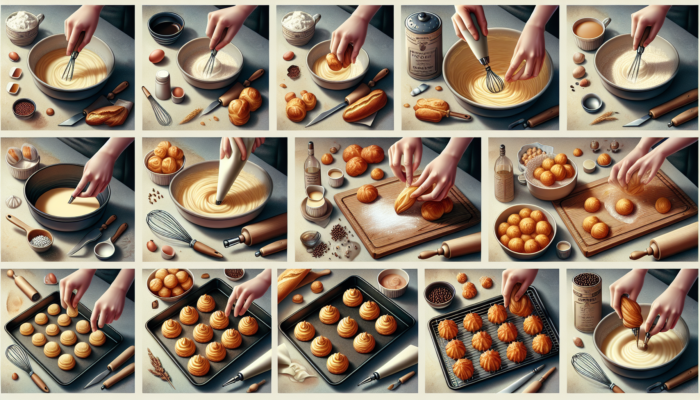
Now that we've covered the essential strategies, let’s delve into a detailed step-by-step guide that will empower you to create your very own choux pastry masterpiece. By following these precise instructions, you’ll be well-equipped to produce the perfect choux every single time, impressing your friends and family with your newfound skills in the kitchen.
Expert Techniques for Crafting Choux Pastry Dough
Creating choux pastry dough may seem straightforward; however, it requires careful attention to detail. Start by accurately measuring your ingredients. In a medium saucepan, combine water, butter, and a pinch of salt. Bring this mixture to a gentle boil over medium heat, ensuring the butter melts thoroughly before proceeding.
Once the mixture reaches a rolling boil, promptly remove the saucepan from heat and immediately incorporate the flour. Stir vigorously with a wooden spoon or spatula until the mixture forms a cohesive ball that pulls away from the sides of the pan. This step is crucial, as it allows the flour to cook properly and develop the necessary structure for your pastry, setting the stage for a successful bake.
Next, transfer the dough to a mixing bowl and allow it to cool for about five minutes. This cooling period is crucial to prevent the eggs from cooking upon contact, which would compromise the texture. Gradually add the eggs, mixing thoroughly until the dough becomes smooth and glossy. The dough should fall from the spatula in a thick ribbon, indicating the right consistency. If the dough feels too stiff, add a bit more egg; if it's too runny, you may need to incorporate more flour accordingly.
Once your dough has achieved the desired consistency, allow it to rest for at least 15 minutes. This resting phase is essential for relaxing the gluten, resulting in a more tender pastry that is easier to pipe and shape, ensuring an even more delightful end product.
Refining Your Piping Techniques for Choux Pastry Perfection
Piping choux pastry is an art form that can significantly influence the shape and uniformity of your pastries. Begin by preparing your piping bag fitted with a round tip—typically, a 1cm (0.4 inches) plain tip works best for creating éclairs and cream puffs.
Fill your piping bag with the prepared pastry dough. To ensure uniform shapes, pipe the dough onto a lined baking sheet while holding the bag at a 90-degree angle. Gently squeeze the bag while lifting it to create a peak, then stop applying pressure before pulling away to avoid leaving tails, which can affect the final appearance.
For éclairs, pipe straight lines measuring about 10cm (4 inches) long, while for cream puffs, create small mounds approximately 4cm (1.5 inches) in diameter. To ensure a smooth finish, lightly dip your finger in water and gently smooth down any peaks left from piping. This small yet significant step contributes to a polished appearance once baked, enhancing the overall presentation of your pastries.
Ensure that there is ample space between the pastries on the baking tray, as they will expand during baking. Maintaining at least 5cm (2 inches) of space between each piped piece is a good guideline to follow, ensuring that each pastry has room to rise and develop beautifully without sticking together.
Crucial Baking Tips for Crafting Flawless Choux Pastry
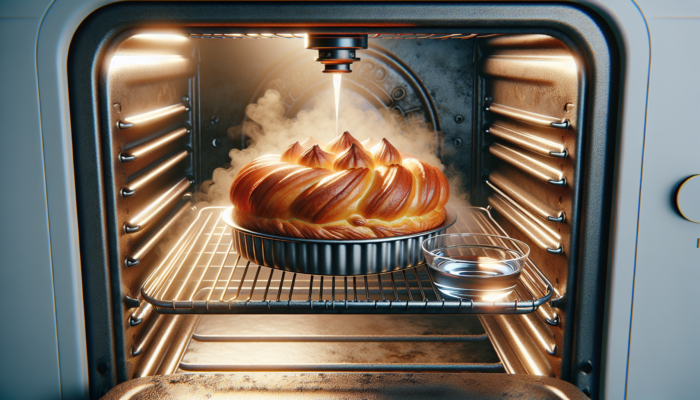
Baking is where the true magic happens for choux pastry. To ensure even rising and thorough cooking, preheat your oven to 200°C (390°F) and position your baking tray in the center of the oven for optimal heat distribution.
To generate steam, which is vital for the rise of the pastry, place a small oven-safe dish filled with water at the bottom of your oven. This will create a humid environment, preventing the pastries from drying out too quickly while helping them achieve that perfect puff that everyone loves.
Refrain from opening the oven door during the first 20 minutes of baking. A sudden drop in temperature can cause your pastries to collapse, resulting in flat and disappointing outcomes. After 20 minutes, you can briefly check on their progress. If they are rising nicely and developing a beautiful golden brown color, you are well on your way to achieving success.
When the pastries are fully baked, they should be golden and firm to the touch. Remove them from the oven and allow them to cool on a wire rack. This cooling phase is crucial to prevent sogginess; if left on the baking tray, moisture can accumulate and negatively impact the texture of your delightful creations.
Solutions for Common Choux Pastry Issues: Troubleshooting Tips
Even experienced bakers can face challenges when crafting choux pastry. Recognizing these common issues and their solutions is essential for mastering the art of achieving flawless choux pastry results.
Identifying and Resolving Flat Pastries: Common Causes and Solutions
Flat choux pastries can stem from several factors. A primary cause is insufficient steam during the baking process. If your dough lacks moisture or the oven environment is too dry, the pastries may not rise as expected. To remedy this, ensure your water-to-flour ratio is precise, and consider adding an extra egg to boost moisture levels in the dough.
Improper mixing can also lead to flat pastries. If the dough isn’t mixed thoroughly after adding the eggs, it may become overly dense, inhibiting the necessary lift. Mix until the dough is smooth and glossy to promote that light, airy texture that defines successful choux pastries.
Additionally, avoid opening the oven door prematurely. A sudden temperature drop can lead to collapsing pastries. Exercise patience and wait until they have risen well before checking on them to ensure you achieve the best results possible.
Preventing Soggy Bottoms in Your Choux Pastry: Tips and Tricks
Soggy bottoms can be a frustrating issue when baking choux. This problem often arises from either underbaking or excess moisture in the dough. To prevent soggy bottoms, ensure your pastries are baked until they achieve a beautiful golden brown color and feel firm to the touch, indicating they are fully cooked.
Using a baking sheet lined with parchment paper can help absorb moisture during baking. If you discover that your pastries remain soggy, consider returning them to the oven for additional baking time to ensure they dry out completely and achieve that desirable crisp texture.
Another practical tip is to pierce the bottom of the pastries with a toothpick after baking, allowing steam to escape. This technique helps prevent moisture from being trapped inside, resulting in a crispier finish that enhances the overall enjoyment of your delicious treats.
Addressing Cracking Issues During Baking: Solutions to Common Problems
Cracking in choux pastry is a frequent occurrence caused by various factors. One primary reason for cracking is baking the pastries at excessively high temperatures. While a high initial temperature is critical for rising, the pastry may rise too quickly and develop cracks if the temperature is excessively high.
To resolve this, consider reducing the temperature slightly after the first 15 minutes of baking, allowing for a more gradual rise that helps maintain the integrity of your pastries without compromising their height.
Overmixing the dough after adding the eggs can also lead to a fragile structure that struggles to support the rising process. Mix just until the ingredients are combined and smooth for optimal results without compromising the final product.
Lastly, ensure you are using fresh ingredients. Old flour or stale eggs can negatively impact the quality of your pastry, leading to unsatisfactory outcomes that detract from your baking efforts.
Advanced Techniques for Elevating Your Choux Pastry Skills
Once you have a solid understanding of the fundamentals, it's time to explore advanced techniques that will elevate your choux pastry creations to extraordinary levels of culinary excellence.
Creating Choux Au Craquelin: A Crunchy Twist on Traditional Pastry
Choux au craquelin is a delightful variation on classic choux pastry that features a crunchy topping, adding texture and flavor to the finished product. To prepare this variation, create a simple sugar cookie dough using equal parts flour, butter, and brown sugar.
Roll the craquelin dough into a thin sheet and cut it into smaller circles that are slightly smaller than your piped choux. Before baking, place a circle atop each piped pastry. As the pastries rise, the craquelin spreads, forming a delightful, crunchy topping that beautifully contrasts with the soft interior of the pastry below, enhancing the overall experience of your dessert.
This technique not only adds visual appeal but also enriches the flavor profile of your choux creations, making them even more enticing and enjoyable for your guests, who will surely appreciate the added dimension of texture and taste.
Infusing Unique Flavors into Choux Pastry for Creative Variations
Infusing flavors into your choux pastry dough can lead to exciting and innovative culinary creations. Consider infusing your butter with vanilla, citrus zest, or spices such as cinnamon before mixing it with the flour. Such subtle enhancements can elevate your pastries, transforming them into truly unique and unforgettable treats.
Another thrilling option is to directly incorporate extracts or flavorings into the dough. For instance, adding a touch of almond extract can provide a delightful twist to classic éclairs. Exercise caution with the amounts used, as a little can go a long way in flavoring your pastries, ensuring a balanced taste that complements rather than overwhelms.
For a more adventurous approach, consider adding cocoa powder to your flour to create chocolate choux pastry. This rich base pairs beautifully with fillings such as cream or custard, resulting in an indulgent treat that will satisfy even the most discerning sweet tooth.
Perfecting the Art of Decorating and Filling Choux Pastry
The final step in perfecting your choux pastry involves mastering the art of decorating and filling. Classic fillings such as whipped cream, pastry cream, or custard are always popular choices that resonate with many palates. To fill your pastries, use a piping bag fitted with a small round tip. Insert the tip into the base of the pastry and gently squeeze until you feel slight resistance, ensuring an adequate filling that brings joy with every bite.
For decoration, consider glazing your éclairs with a simple chocolate ganache or icing. A light dusting of powdered sugar on cream puffs adds an elegant touch that elevates their appearance. You might also experiment with edible gold leaf or colorful sprinkles for a festive flair that will impress your guests and make your pastries truly stand out on any dessert table.
Remember, presentation is vital for impressing your guests. Take the time to artfully arrange your pastries on a plate, and consider pairing them with fresh fruit or a berry coulis for an added splash of color and flavor contrast that enhances the overall dining experience.
Discovering the Versatile Applications of Choux Pastry in Culinary Arts
Understanding the diverse applications of choux pastry can unlock a world of culinary possibilities. Here are some classic and modern uses of choux pastry that showcase its remarkable versatility and appeal.
Crafting Classic Éclairs and Profiteroles with Style
Éclairs and profiteroles are among the most recognized forms of choux. Éclairs are long, filled pastries traditionally filled with pastry cream and topped with rich chocolate icing. To create perfect éclairs, pipe elongated shapes onto a baking sheet. Once baked and cooled, fill them with your preferred filling and drizzle with chocolate ganache for a classic finish that delights the senses and satisfies cravings for something sweet.
Conversely, profiteroles are small, round puffs often filled with whipped cream or ice cream. They can be served plain or drizzled with chocolate sauce for added indulgence. To create profiteroles, pipe small rounds and bake just as you would for éclairs. Once filled, they can be beautifully assembled into a croquembouche, creating an impressive centerpiece for any special occasion that will leave your guests in awe.
Transforming Choux Pastry into Irresistible Churros and Beignets
Choux pastry can also be adapted to create beloved fried treats such as churros and beignets, which are adored by dessert enthusiasts everywhere. For churros, pipe the dough into hot oil and fry until they achieve a golden brown hue, resulting in a crispy exterior. After frying, toss them in a mixture of cinnamon and sugar for a delightful treat that is crunchy on the outside and soft on the inside, making for a perfect snack or dessert that everyone loves.
Beignets, the iconic French doughnuts, can similarly be made using choux pastry. Pipe small dough balls into hot oil and fry until they puff up and turn golden. Dust them with powdered sugar for an indulgent dessert that is sure to impress your family and friends, inviting them to enjoy a taste of authentic French cuisine that is both comforting and delicious.
Exploring Savory Applications of Choux Pastry for Unique Dishes
Choux pastry isn't limited to sweet treats; it can also create a variety of savory dishes. Cheese puffs, or gougères, are a fantastic example of this versatility. By incorporating grated cheese, such as Gruyère or cheddar, into your choux pastry dough before piping and baking, you can create delightful appetizers or party snacks that are sure to please even the most discerning palates.
These cheesy delights are perfect for entertaining or as a tasty addition to any meal. Experimenting by incorporating herbs or spices into the dough can further enhance their flavor, making them versatile options that can complement a wide range of culinary creations and flavors, adding a savory twist to your repertoire.

